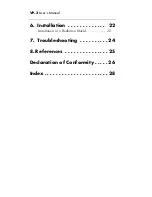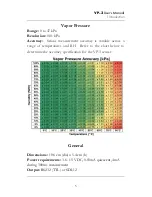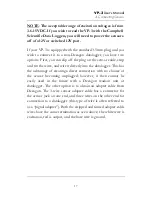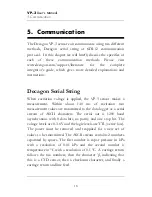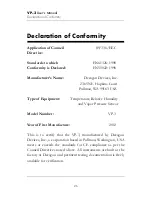
VP-3
User’s Manual
3. RH Sensor
11
3. RH Sensor
RH Sensor Stability
Each VP-3 sensor is verified as accurate before leaving our
facility. However, all capacitance RH sensors will drift over long
periods of exposure to environmental conditions. The VP-3 RH
sensor typically drifts less than 0.5% RH per year. We
recommend that VP-3 sensors be re-calibrated every 1 to 2 years
under normal use conditions to ensure best possible accuracy. To
have your VP-3 fully calibrated or re-calibrate contact
[email protected] and ask about our calibration service.
The polymer RH sensing element in the VP-3 can also be
“poisoned” by exposure to volatile organic compounds, solvents,
and other chemicals. The effects of exposure to these chemicals
can range from subtle loss of accuracy to catastrophic failure. If
you suspect that your VP-3 has suffered chemical exposure or
notice questionable RH measurements, you can check the sensor
accuracy using known RH conditions.
A convenient method for generating known RH conditions is
through the use of salt solutions. For an initial check, we
recommend preparing a saturated NaCl solution, which has an
equilibrium RH of 0.75 (75%). To prepare the salt solution, start
with lab grade NaCl and mix in enough water that there is a thin




